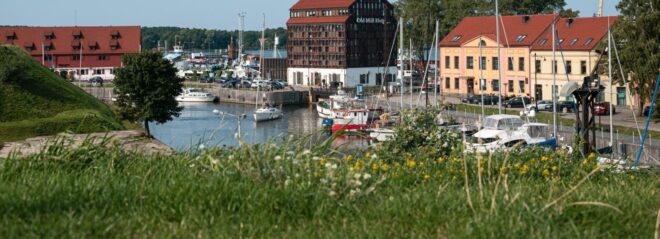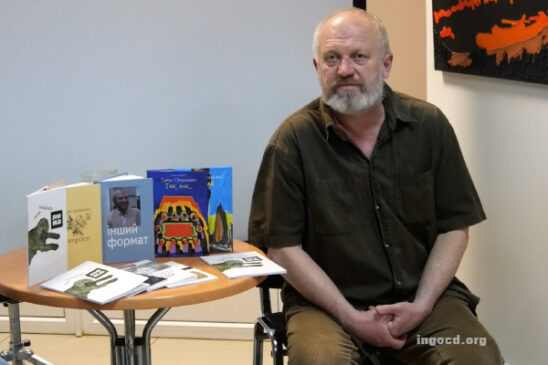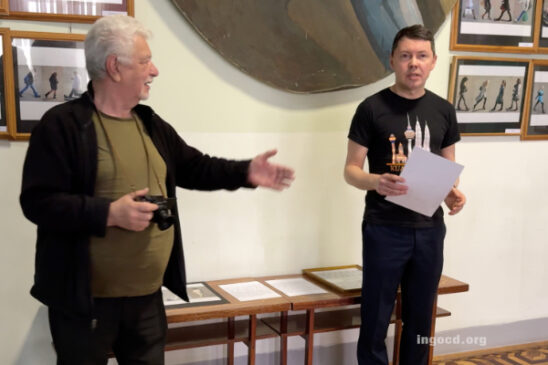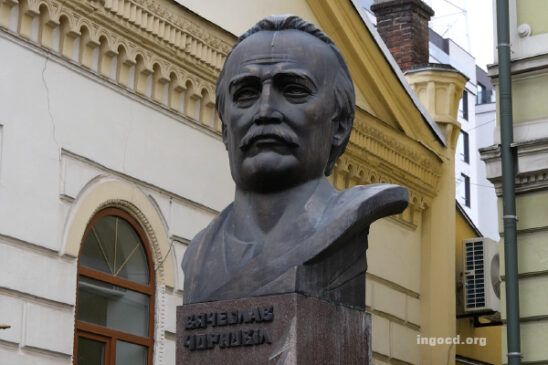Greece education system
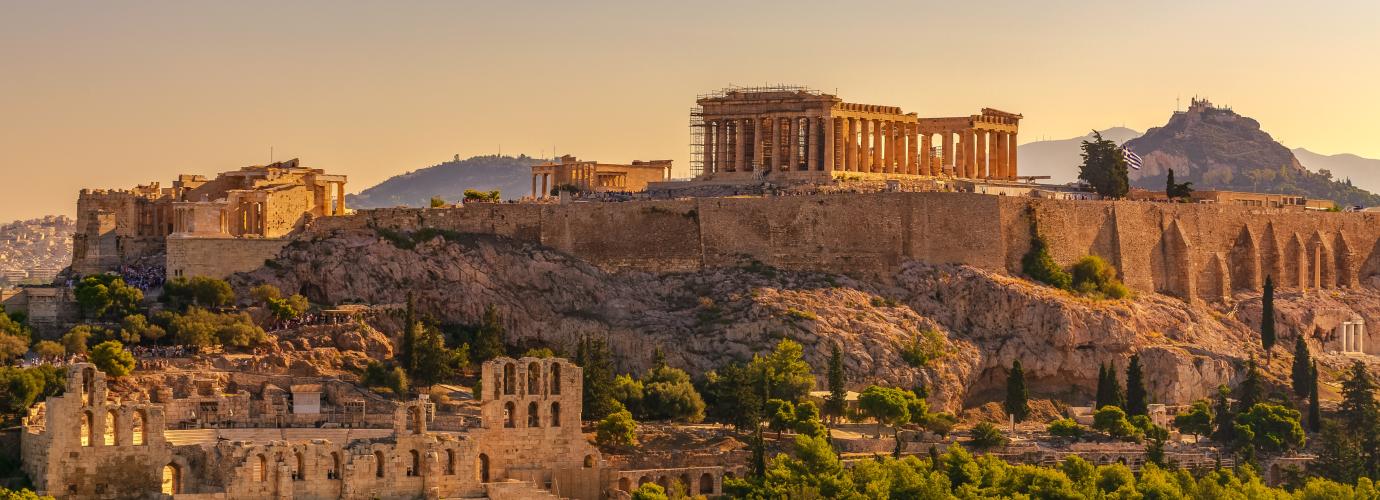
1. Key features of the education system
The provision of free education to all citizens and at all levels of the state education system is a constitutional principle of the Greek State.
The Greek educational system is centralised. National laws, presidential decrees and ministerial acts are prevalent within it.
Central level
The central administrative body for the education system across all fields, agencies and levels is the Ministry of Education and Religious Affairs.
It takes the key decisions related to long-term objectives. It also regulates various issues, such as curricula content, staff recruitment and funding.
Regional and local levels
At regional level, the regional education directorates oversee the implementation of the national educational policy.
At local level, the directorates of primary and secondary education supervise all schools in their area. In their turn, school units make sure they run smoothly.
Teachers
Educational officials of the country are higher education graduates.
The main route into teaching in primary schools is to take a 4-year degree in a pedagogical department.
In secondary schools, most teachers follow a 4 or 5-year subject-based degree at a teacher education faculty.
2. Stages of the education system
Compulsory education lasts 11 years and extends from the ages of 4 to 15. The stages of the formal Greek education are mainly 6:
1) Primary education
Primary education includes pre-schools and primary schools.
Nipiagogeio
Nipiagogeio (pre-school) in Greece has become compulsory for all 4-year-old children, since school year 2018/19.
Infant centres (vrefikoi stathmoi), infant/child centres (vrefonipiakoi stathmoi) and child centres (paidikoi stathmoi) represent early childhood care. They are run under the remit of the municipal authorities. They cater for children between the ages of 2 months and up to the age of the beginning of compulsory education.
Dimotiko scholeio
Dimotiko scholeio (primary school) is the next stage and spans 6 years. It concerns children in the age range of 6-12 years.
Since school year 2016/17, there is a single type of school with a new revised daily timetable. Within this framework, all pre-schools and primary schools provide an optional all-day programme.
2) Secondary education
Secondary education includes two cycles of study:
Gymnasio
The first cycle is compulsory and corresponds to gymnasio (lower secondary school).
- It lasts 3 years
- It provides general education
- It covers ages 12-15
- It is a prerequisite for enrolling at general or vocational upper secondary schools
- Parallel to imerisio (day) gymnasio, esperino (evening) gymnasio operates. Attendance starts at the age of 14 and lasts 3 years, as well.
Lykeio
The second cycle is the optional geniko or epangelmatiko lykeio (general or vocational upper secondary school).
- It lasts 3 years
- Pupils enrol at the age of 15
- There are two different types:
- Geniko (general)lykeio. It lasts 3 years and includes both common core subjects and optional subjects of specialisation
- Epangelmatiko (vocational) lykeio. It offers two cycles of studies:
(a) The secondary cycle
(b) The optional post-secondary cycle, the so-called “apprenticeship class”.
- Parallel to day lykeia, there are also:
- Esperina genika (evening general) lykeia
- Esperina epangelmatika (evening vocational) lykeia.
3) Second chance schools (SDE)
SDE are public and target persons aged 18 years or older, who have not completed the nine-year compulsory education and hold the primary school leaving certificate. Attendance lasts 2 years.
4) Post lower secondary vocational education and training, level 3
It is provided in:
- Vocational training schools (ESK)
- Vocational apprenticeship schools (EPAS) of the Manpower Employment Organisation (OAED)
Attendance lasts 2 years and includes grades A and B. Holders of the lower secondary school graduation certificate, or equivalent, can enroll in grade A, without exams. ESK can be public or private, day or evening. EPAS are public.
5) Post-secondary vocational training, level 5
It is provided in:
- Vocational training institutes (IEK)
- Post-secondary cycle of studies – apprenticeship class
IEK provide initial vocational training to graduates from upper secondary schools, i.e. general upper secondary schools (GEL), vocational upper secondary schools (EPAL), as well as holders of equivalent certificates/degrees. Vocational training lasts 4-5 semesters. For EPAL graduates and holders of equivalent vocational certificates or degrees, vocational training may last 2-3 semesters. ΙΕΚ may be public or private.
Post-secondary cycle of studies – apprenticeship class provides initial vocational training to graduates from upper secondary vocational schools, or holders of equivalent certificates or degrees, who have a basic level of knowledge, skills and competences. The post-secondary – apprenticeship programme lasts 11 months.
6) Higher education
Higher education is the last level of the formal education system. Most undergraduate degree programmes take 4 academic years of full-time study.
Postgraduate courses last from one to two years, while doctorates at least 3 years.
HE comprises:
The university sector (panepistimio):
- Universities (AEI)
- Technical Universities
- The Athens School of Fine Arts (ASKT).
The technological sector:
- Technologika ekpaideftika idrymata (technological educational institutes
- The School of Pedagogical and Technological Education (ASPETE).
It is noted that educational institutes have merged with higher education institutes (AEI).
Lifelong learning
Lifelong learning policy in Greece is part of a wider development plan. Law 4763/2020 aims at further reforming LLL structures and facilitating the implementation of LLL policy. The General Secretariat for Vocational Education, Training and Lifelong Learning and Youth plans the public policy of LLL and youth. Non-formal education can lead to certifications recognised at national level. Lifelong learning is mainly provided at:
- Scholeia defteris efkairias (second chance schools – SDE)
- Institouta epangelmatikis katartisis (vocational training institutes – IEK)
- Epangelmatikes Scoles Katartisis and Epangelmatikes scholes Mathitias OAED (vocational training schools, ESK and vocational training apprentiship schools, EPAS of OAED )
- Kentra dia viou mathisis (lifelong learning centres, KDVM)
- Kollegia (colleges).
With Law 4763/2020 introduces the National System for Education and Training which is developed at along the lines of levels 3, 4 and 5 of the European Qualifications Framework (EQF). LLL structures included in the formal education system are Second Chance Schools (SDE) and Vocational Training Institutes (IEK). The reform provides for the creation of post-secondary non-compulsory schools for ages between 16 to 23 (ESK and EPAS) which are included in the formal education system. Lifelong learning Centres (KDVM) and colleges are part of the non-formal education system.
3. Useful links
The Eurydice Description of National Education Systems provides comprehensive and comparable information. The following websites may also be of assistance:
- Ministry of Education and Religious Affairs
- Institute of Educational Policy
- Hellenic Statistical Authority under the section “Population and Social Conditions”
- OECD’s Educational Policy Outlook Profile for Greece
For a brief description of the education system, please consult the following schematic diagram:
4. Structure of the national education system
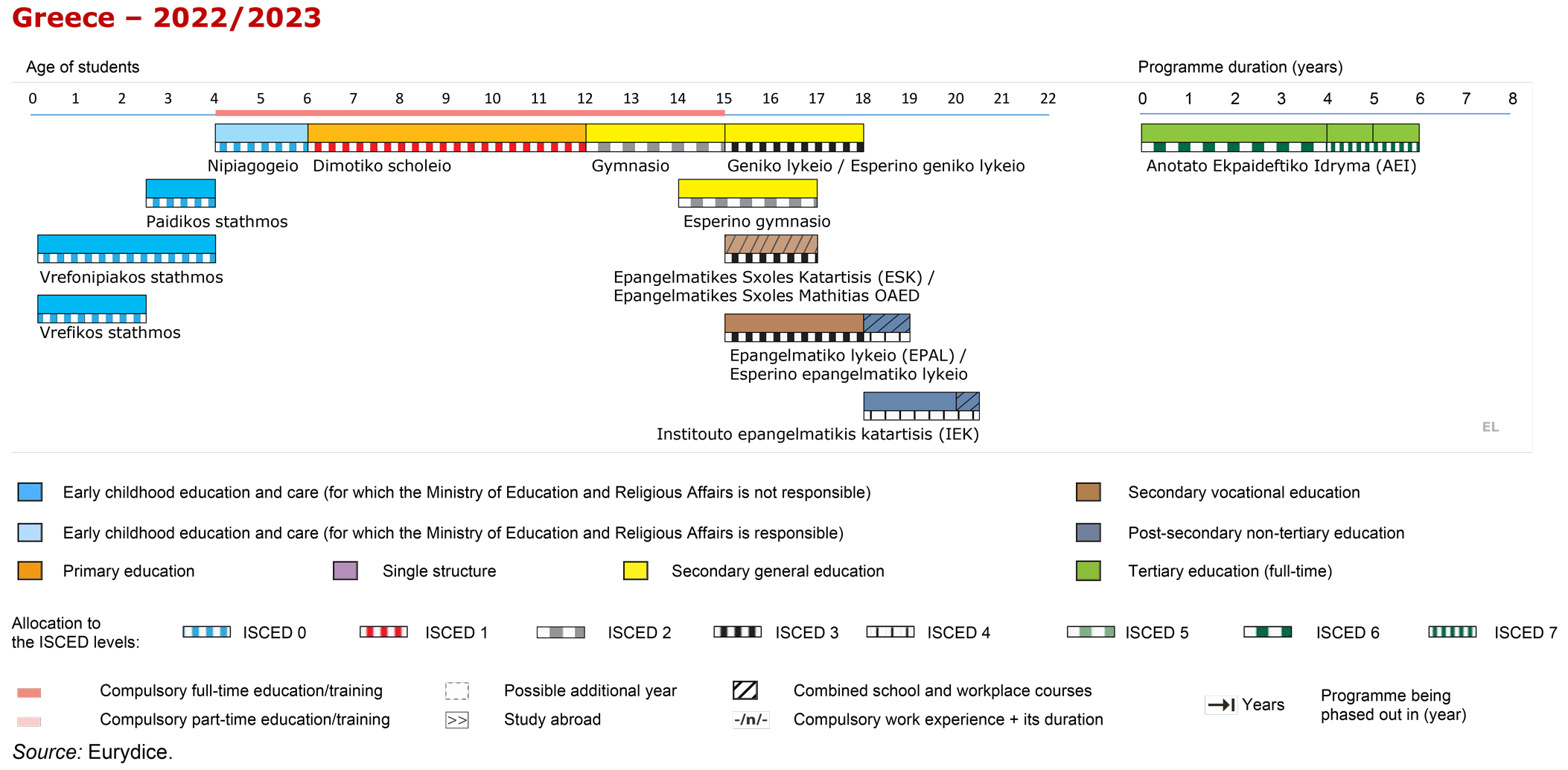
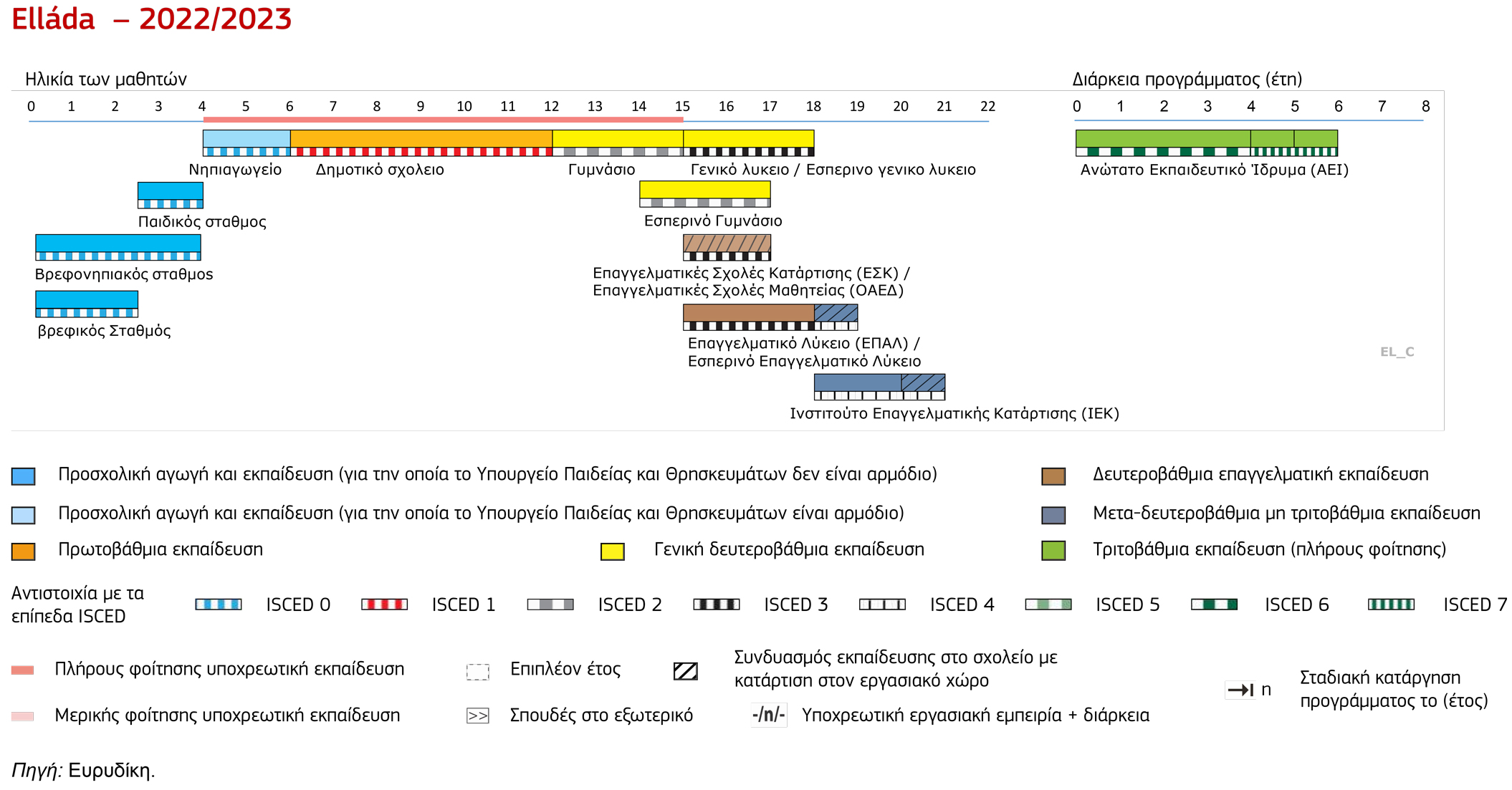
5. Common european reference tools provided by the Eurydice network
- National Student Fee and Support Systems
- The Organisation of the Academic Year in Higher Education
- The Organisation of School Time in Europe (primary and general secondary education)
- Recommended Annual Instruction Time in Full-Time Compulsory Education in Europe (presented by grades/stages for full time compulsory education as well as by subject and country)
- Teachers and School Heads Salaries and Allowances in Europe (salaries and allowances of teachers and school heads at pre-primary, primary, lower secondary and upper secondary education levels).
Source: https://eurydice.eacea.ec.europa.eu/national-education-systems/greece/overview
Follow us on social media: Facebook, Twitter, Instagram, YouTube.

